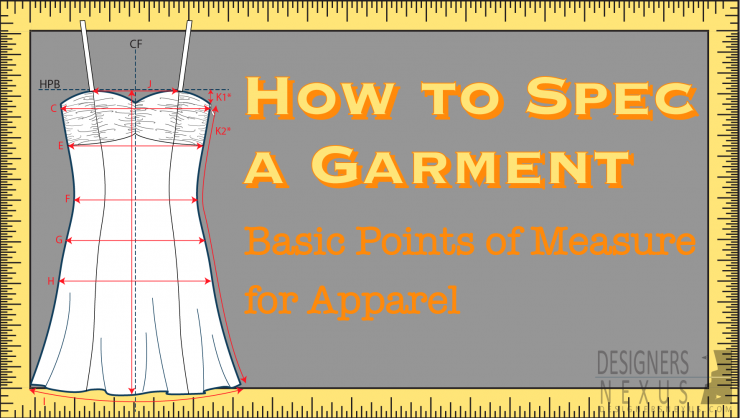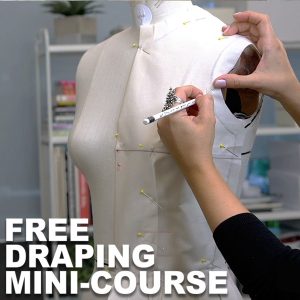In a few of our articles, we’ve mentioned that specs are measurements and details of a garment when lain flat. If you don’t know how to spec, and even if you think you do – you should become very comfortable with the process because chances are, you’ll find yourself specing garments – a lot!
Here we’ll cover some of the basic POMs (points of measure) used when specing different garments. Measurements can be taken “on the half”, or total. In this article, spec examples are given on the half. For a fully detailed guide on specing garments, including full illustrated diagrams, measuring instructions, and extensive points of measure for various garment types, tech pack samples & templates download the “How to Spec a Garment” ebook. (See more details below.)
General Terms
HPS: (High Point Shoulder) A main reference point located at the highest point of the shoulder, where the shoulder seam meets the neckline. Many measurements are given in relation to the HPS.
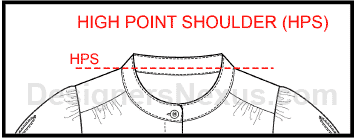
Center Front (CF): Not to be confused with placket edges, the center front is an invisible line running vertically down the exact center of the front of a garment.
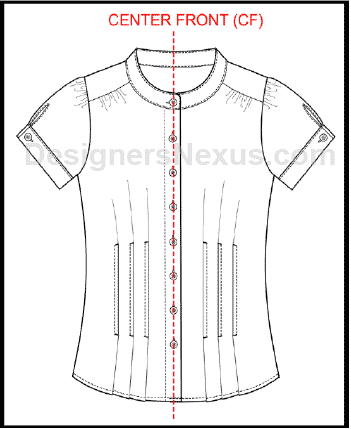
Center Back (CB): An invisible line running vertically down the exact center of the back of a garment.
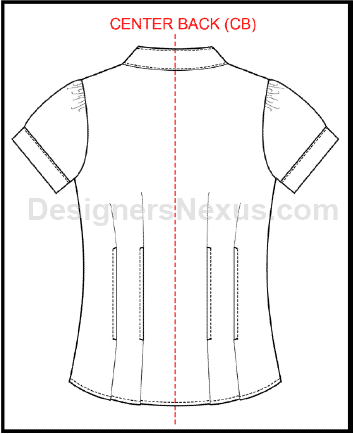
Side Seam (SS): Seams on the left and right sides of a garment from the bottom of the armhole down to the bottom hem.
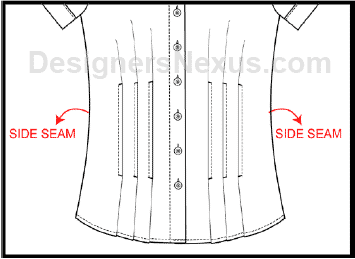
Points of Measure (POM):
Tops/Jackets/Dresses
Body Length: Length of the garment from HPS to the Bottom Sweep.
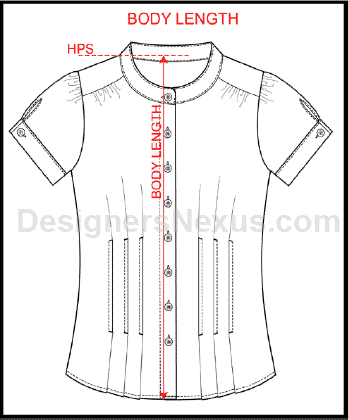
Across Chest: Usually measured 1” below armhole horizontally from edge to edge.
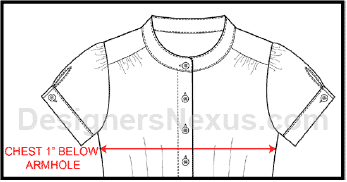
Waist: Measured horizontally from edge to edge at a specific distance below HPS, which will vary depending on sample size and company standards. Example: For a Junior size 9 waist spec is taken from 15 ½“ below HPS.
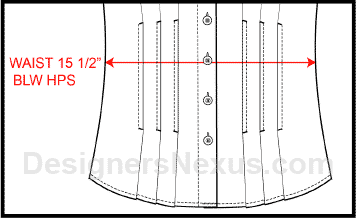
Hip: Measured horizontally from edge to edge at a specific distance below HPS, which will vary depending on sample size and company standards. Example: For a Junior size 9 hip spec is taken from 24“ below HPS.
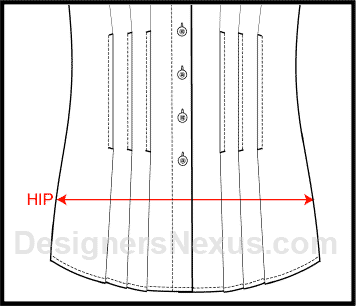
Bottom Sweep: The bottom edge of the garment measured horizontally straight across from edge to edge
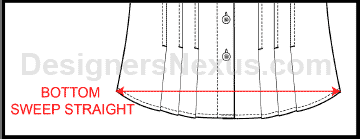
Sleeve Length: Distance from the top of the sleeve at the shoulder seam, to the sleeve opening.
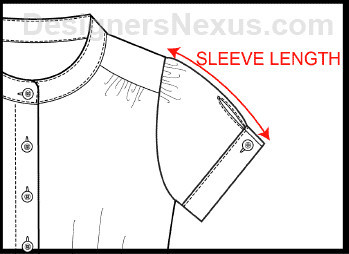
Bicep: Measured 1” below the armhole, perpendicular to the length of the sleeve.
Armhole (Curved): Measured along the curve of the armhole seam where the bottom armhole meets the side seam, to where the top of the armhole meets the shoulder seam.
Shoulder Drop: From HPS to the shoulder seam at armhole.
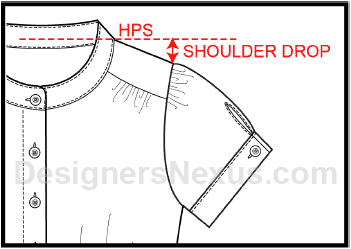
Neck Opening: Measured from neck seam to neck seam at HPS
Bottoms:
Upper Waist: Usually measured by aligning the front and back waistbands and measuring straight across the top of the waistband from edge to edge.
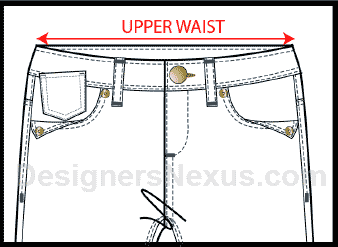
Lower Hip: The lower hip spec is given through the 3 point method using three points of measure marked at a certain distance below the top waist at the sides and CF.
Thigh: Typically measured 1” below the crotch seam, perpendicular to the pant leg from side to side.
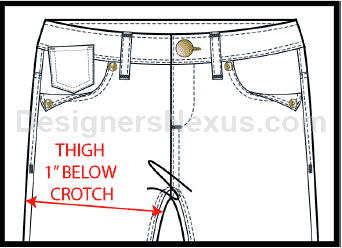
Knee Opening: Measured at a certain distance below the crotch seam perpendicular to the pant leg from side to side. Example: A Junior size 9 knee opening is taken from 12” below the crotch.
Leg Opening: Measured horizontally across the bottom edge of the leg opening.
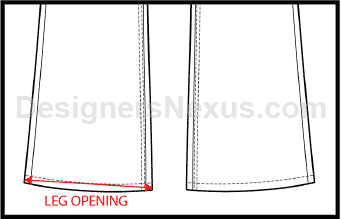
Front Rise: The center front seam from the crotch seam to the top of the front waistband.
Back Rise: The center back seam from the crotch to the top of the back waistband.
Inseam: The inner leg seam from the crotch seam to the leg opening.
Here is an example of specs that have been entered into a garment Specification Sheet (Spec Sheet):
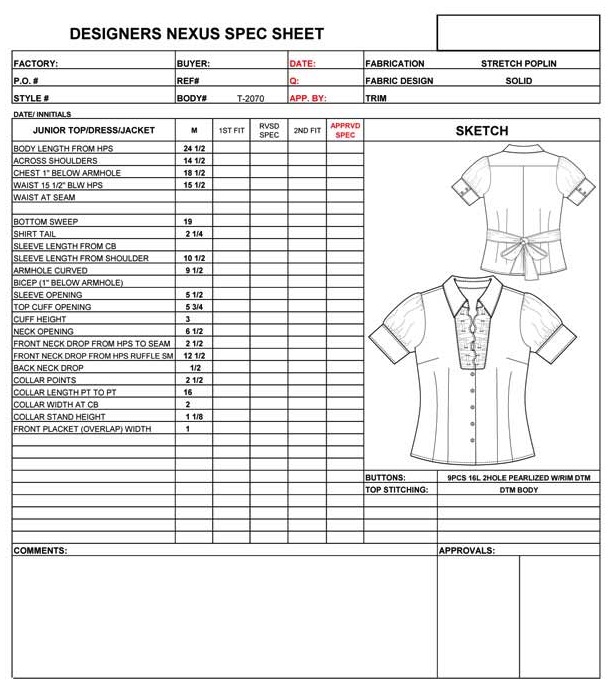
Important details not included in the spec list, should be detailed as callouts in the flat sketch, using arrows and detail sketches. Callouts should include any information that the patternmaker will need to create the pattern for the garment. Please note: Patternamkers use specs as a guide for the general size and fit of a finished garment. Actual pattern piece measurements will be different due to necessary adjustments needed to achieve proper fit and balance of a garment.
When detailing flats, try not to overcrowd the sketch with arrows and numbers. All important elements of the sketch should remain visible and all measurements and descriptions should be ledgible.
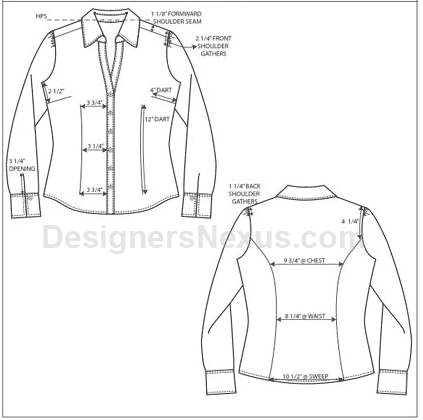
For a fully detailed printable reference on specing garments, including additional POMs (points of measures), measurement instructions and illustration diagrams, and additional tips for specing and detailing a garment, check out our full “How to Spec a Garment” ebook!
With your ebook, you will also receive our Apparel Tech Packs!


